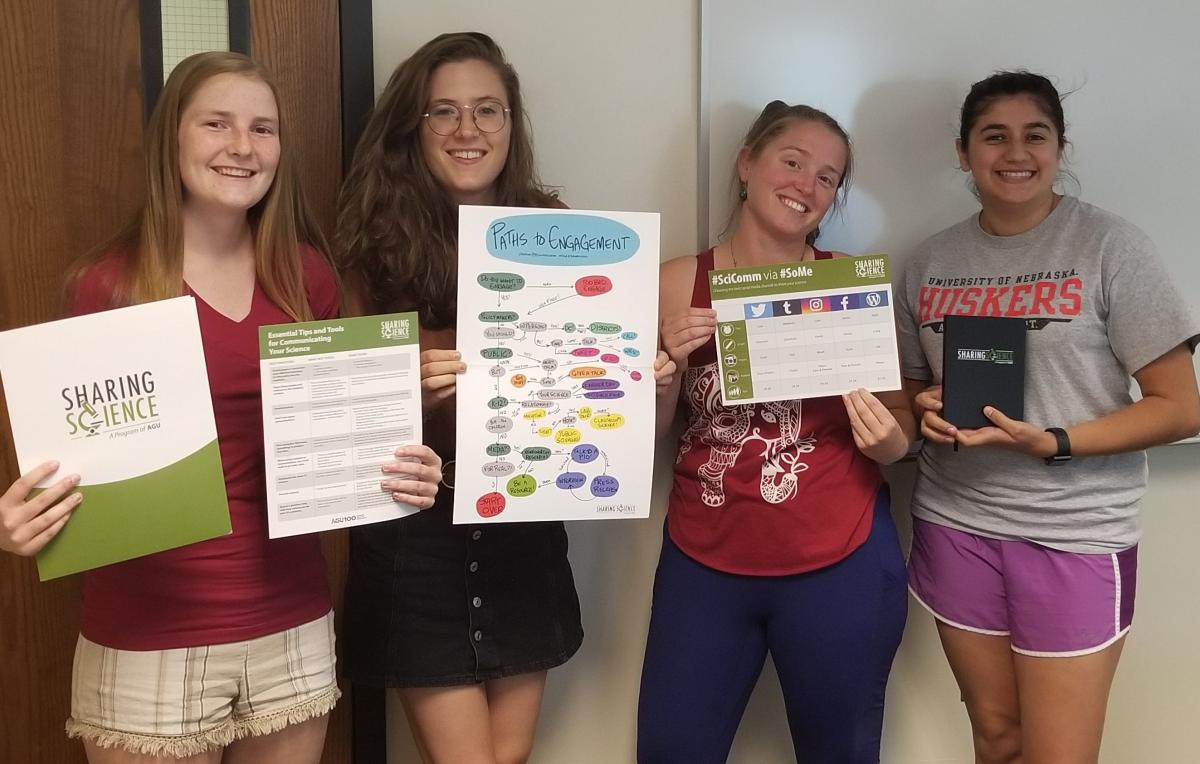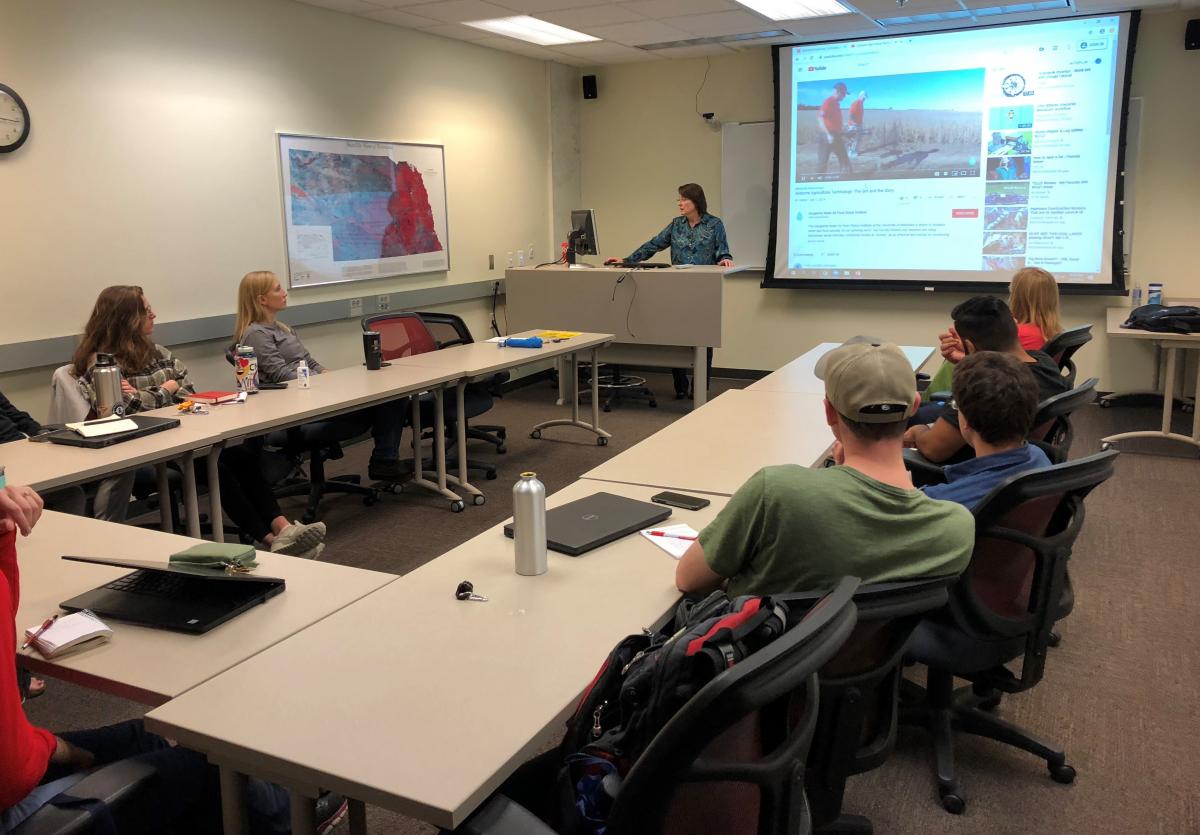
NRT students boosted their communications skills through trainings in September and October and now are working with Daugherty Water for Food Institute at the university to produce videos communicating their research. Plans are to post the videos on the websites of the institute and NRT and alongside the students’ online publications.
Molly Nance, Public Relations and Communications Director for the institute, will be working with the students on this effort to draw more attention to their research. She explained in a presentation to the NRT on October 2 that scientists desiring more notice of their research should use video because it draws the most attention of any media.
“In our own research, we’ve found that video postings generally get 100 times more views than a text post; for example, 50 views for a text post versus 5000 for a video post,” Nance said.
Prior to Nance’s presentation, NRT students Jazmin Castillo, Julie Fowler, Katharine Hogan and Jessie Johnson heard similar remarks about the growing importance of social media at an American Geophysical Union workshop, “Sharing Science,” at the University of Montana on September 20-21.
“The AGU workshop focused on how to advocate for science to policymakers and to the general public through social media,” Castillo said. “The presenters, Shane Hanlon and Brittney Webster, also talked about the importance of science communication to different groups of people.”
Castillo said they stressed the importance of knowing your audience, recognizing diversity and not being afraid to advocate for your science.
“It's important to be an advocate for your science because as Brittney stated, 'If you're not at the table, then you're on the table,’” Castillo said.
The AGU workshop also instructed students how to use storytelling to communicate their research and advocate for it.
“Stories are memorable, so we learned about creative ways to turn our research and our experience as scientists into stories,” Castillo said.
Nance shared tips for how students can best prepare to tell these stories and then relay them on video.

“Get your zen on before the interview,” she said. “Take a deep breath. Smile. Focus on what you want to say, not the camera. Look at the interviewer, not the camera. Make the most of your opening statement in the interview by either making a bold statement or asking a question.”
Students can prepare for an interview by practicing before a mirror, but Nance said they shouldn’t try to follow a script. She encouraged students to keep what they say simple and succinct, avoiding jargon and technical terms.
“Know what you are going to say and practice so you can feel relaxed and confident during the interview,” Nance said. “Great preparation equals great performance.”
She showed examples of good and bad video interviews and even gave specifics about what clothing is most appropriate for video interviews, like collared or buttoned shirts work best for clip-on microphones.
Wardrobe malfunctions aside, both the AGU presenters and Nance advised students that their primary focus should be on their science and communicating it clearly.
“Try to connect the dots for the audience by telling how your research is benefitting people,” Nance said.
— Ronica Stromberg, National Research Traineeship Program Coordinator

